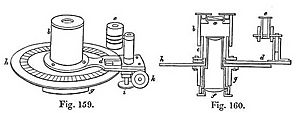Henry Beaumont Leeson facts for kids
Henry Beaumont Leeson (born 1803, died 1872) was a smart British scientist. He was a doctor, also called a physician, and a chemist. Today, he is mostly remembered for a special tool he invented that helps scientists study light and tiny crystals.
A Life of Science
Henry Beaumont Leeson was born in 1803. His father was Robert Leeson from Nottingham. Henry went to school at King's Cliffe and Repton School. Later, he studied at Caius College, Cambridge starting in 1822. He earned his first degree in 1826 and a master's degree in 1829.
Leeson then decided to study medicine. He went to St Thomas's Hospital in London. In 1840, he earned his M.D. degree from the University of Oxford. From 1840 to 1852, he worked as a doctor and also taught chemistry and forensic medicine at St Thomas's Hospital.
He was also involved in important science groups. He was the Treasurer of the Cavendish Society, which was created in 1846 to publish books about chemistry. In 1849, he became a Fellow of the Royal Society, which is a very respected group for scientists. He was also part of the Royal College of Physicians and the Chemical Society.
Later in his life, Leeson moved to the Isle of Wight. He lived in a house near a place called Pulpit Rock, close to Bonchurch. He also bought and improved other properties in that area.
His Scientific Work
Henry Leeson was an inventor, especially when it came to tools for studying light. In 1843, he wrote a paper about how light behaves with different oils.
His most famous invention was a special optical tool called a Leeson goniometer, sometimes known as a Leeson prism. This tool was made from a clear mineral called Iceland spar. It was designed to measure the angles of very small crystals.
Leeson's goniometer was very important and became a standard tool for scientists. It could be attached to a microscope. Even in a book from 1921, the way to use Leeson's goniometer was still being explained. It worked by making two images of a crystal line up perfectly to measure its angles. Leeson is also known for creating the first device that could turn a crystal to study it from different angles.
Images for kids



